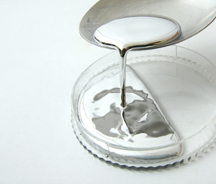 Where does roughly half of all mercury that enters public water treatment systems come from?
Where does roughly half of all mercury that enters public water treatment systems come from?
If you answered dental offices, you would be correct.
According the U.S. Environment Protection Agency 120,000 dental offices use or dispose of amalgam fillings, which contain a mixture of mercury and other metals used in dental fillings. Most of these offices are attached to public sewer systems. The amalgam waste is flushed at the point-of-care down chair-side drains. When the amalgam is discharged into the sewer systems, it can be transformed into methylmercury, which is a highly toxic neurotoxin that impairs brain and nervous system development and function. Methylmercury can build up in fish, shellfish and fish-eating animals, which can be harmful to humans who consume the fish.
The EPA recently proposed new rules to help eliminate at least 8.8 tons of the toxic metal discharges a year. Dentists will be required to use amalgam separators, which are currently being used by 40-50 percent of dentists across the country. Currently, only 12 states and cities across the country have mandated the amalgam separators. These capture devices can remove 95-99 percent of the mercury and other metal waste from the discharge, and according to the EPA, are affordable and necessary to protect human health and the environment.
Kenneth Kopoci, EPA’s deputy assistant administrator for water, said in an official press release, “This is a common sense rule that calls for capturing mercury at a relatively low cost before it is dispersed into the water treatment facilities. The rule would strengthen human health protection by requiring removals based on the use of a technology and practices that approximately 40 percent of dentists across the country already employ.”
The proposal also received unilateral support from clean water advocates.
Laura Haight with NY Public Interest Research Group said in a recent DentistryIQ article[i], "Setting a pretreatment requirement for dental offices is a cost-effective method of keeping mercury out of our environment. New York has had a similar requirement in place for years. Amalgam separators are widely available, straightforward to install, operate without electricity or chemical addition, have low installation and maintenance costs, and facilitate easy recycling of mercury from dental fillings."
Elizabeth Saunders, Massachusetts’ director of clean water action, echoed Haight’s comments, “Mercury released from amalgam fillings at dental clinics can be easily managed and prevented, As states like Massachusetts with existing programs have found, the amalgam separator rule can be designed to avoid any unnecessary regulatory burdens on states and publicly owned wastewater treatment plants, thereby minimizing costs."
Should the proposal go into effect, separators would need to be installed in more than 60,000 dental offices nationwide. The estimated cost of the rule on an annual basis is $44-$49 million, but should cut state and local oversight by a similar amount.
Teledyne Leeman Labs Mercury Analyzers are used in many laboratories around the world to analyze water for Mercury and other elements. There are several published application notes for the analysis of Mercury. For a list of notes available for download click the box below:
[i] http://www.dentistryiq.com/articles/2014/09/advocates-applaud-epas-proposal-to-control-dental-mercury-discharges.html

